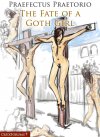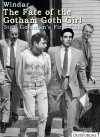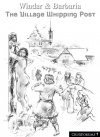No: 356
Barbaria - The Cardinal Bishop and his Female Pope
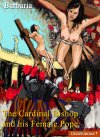
The year is 1691. The place is the Vatican. Pope Alexander VIII has died unexpectedly. A divided College of Cardinals elects a dark horse candidate to be his successor. The new Pope, the 242nd, takes the name Innocent XI and begins, with the aid of close confidant and supporter, Cardinal Bishop Praetorio, a pontificate that shakes the entrenched Vatican establishment with controversial new initiatives and reforms. But wait. Unbeknownst by everyone but the Cardinal Bishop, the new Pope is a woman! But how long can that fact be hidden? Follow Praetorio’s emotionally conflicted telling of the fateful and shocking sequence of events … the betrayal, discovery, arrest, confinement, rape, trial, torture, condemnation and sentencing that led to her public humiliation and execution by crucifixion in St. Peter’s Square as a reviled papal imposter and anti-Christ.
For comments visit the original thread:
Hi friends, Launching a new story here … a bit of revisionist history I’ve had floating about in my head the last day or two. It will be coming out slowly over the coming weeks. And attention artists: a challenge for you. I’d love to see some accompanying art posted on the thread. Remember...
www.cruxforums.com
Alternative epilogue by
@Praefectus Praetorio :
Twenty Years After (with Apologies to Alexandre Dumas père and
@Barbaria1 )
October 1711
Autumn leaves were thick underfoot as the little procession worked its way slowly down the
Via Ostiense past the pyramid of Cestius toward the
Porta San Paolo, (St Paul's Gate).
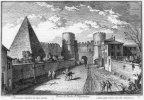
A very old but still tall and erect man walked in the center draped in the scarlet robes of a Cardinal of the Holy Church. He was supported on each side by a young priest, clothed in black.
Just before the gate, they turned off to the left, through a small opening in a wall, into an enclosed meadow just next to the ancient Aurelian Walls of Rome.
The two young priests crossed themselves nervously as they entered this foreign land. The quiet, well-tended place was interrupted by a few upright stones with strange, non-Latin inscriptions. None bore the sign of the cross.
They led the old man to a small stone set flat into the ground with no inscription at all. There, he insisted that they release him, and he allowed his ancient knees to fall onto the hard, unyielding stone. The Priests cringed at the knowledge of how painful that must have been, but only the slightest groan escaped the old man's lips. They then retired as expected and allowed him to commune with the dead.
Cardinal-Bishop-Emeritus Praefectus Praetorio delivered his usual weekly silent newsletter on matters at the Vatican and throughout the church. He reported with regret that the last major reform that he had helped promulgate had been annulled by the Pope and the new, ultra-orthodox
curia. He did not report that the last stone inscription referencing her Papacy had been discovered and rudely chiseled away at the curia's orders. He also did not say that he was being forced into full retirement at the end of the year.
With tears streaming down his cheeks as they had at each of these visits over the last twenty years, the senior prelate apologized for failing to save her and confessing once more his undying love for Barbara of Mohr. Then, his silence ended as a great wailing came from his tired old lungs, and he clasped his hands to his chest in sorrow. Overcome with emotion, the old man rocked and swayed and soon fell over on his side on the grass.
The two priests hurried up to help him to his feet. Still sobbing uncontrollably, he allowed them to steer him back to the
Via Ostiense and the painful march back to the Vatican.
The Cardinal Bishop did not have the strength to visit the pleasant greenspace the next week or the next. Another week on, he died while at morning prayers. The other Cardinals were shocked when, in his will, he had insisted that he be buried in the unconsecrated ground by
Porta San Paolo. While a few non-catholic foreigners had been buried there, it was unprecedented that a Prince of the Church would be so interred. Nevertheless, the highly influential Cardinal Étienne Le Camus, Bishop of Grenoble had insisted that his wishes be honored.
The burying of a major Cardinal gave the ground a bit of respectability. Over the years, it became the place where non-Catholics were buried in Rome and came to be known as the
Cimitero Acattolico (Non-Catholic Cemetery), or
Cimitero Inglese (English Cemetery) for the many English buried there, including the poets Shelly and Keats. Due to this, it is an attraction for visitors even today. But none of these who wander the cool, peaceful space know the story of the small, flat gray stone without inscription not far from the proud monument over a Cardinal.





